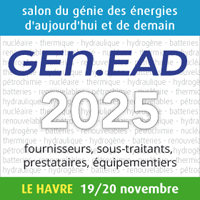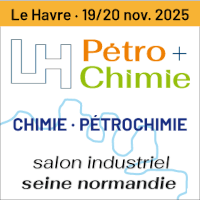juin
16
2010 | Expansion of nuclear energy is a key contributor to combating climate change
Almost one quarter of global electricity could be generated from nuclear power by 2050, making a major contribution to cutting greenhouse gas emissions. This is the central finding of the Nuclear Energy Technology Roadmap, published today by the International Energy Agency (IEA) and the OECD Nuclear Energy Agency (NEA). Such an expansion will require nuclear generating capacity to more than triple over the next 40 years, a target the roadmap describes as ambitious but achievable.
Speaking from the East Asia Climate Forum in Seoul, IEA Executive Director Nobuo Tanaka said: “Nuclear energy is one of the key low-carbon energy technologies that can contribute, alongside energy efficiency, renewable energies and carbon capture and storage, to the decarbonisation of electricity supply by 2050.” NEA Director General Luis Echávarri stated: “Nuclear is already one of the main sources of low-carbon energy today. If we can address the challenges to its further expansion, nuclear has the potential to play a larger role in cutting CO2 emissions.”
The roadmap finds that nuclear power is a mature, low-carbon technology that is ready to expand rapidly over the coming decades. The latest reactor designs, now under construction around the world, build on over 50 years of technology development. The roadmap notes that these designs will need to be fully established as reliable and competitive electricity generators over the next few years if they are to become the mainstays of nuclear expansion after 2020.
No major technological breakthroughs will be needed to achieve the level of nuclear expansion envisaged, the roadmap finds. However, important policy-related, industrial, financial and public acceptance barriers to the rapid growth of nuclear power remain. The roadmap sets out an action plan with steps that will need to be taken by governments, industry and others to overcome these. A clear and stable policy commitment to nuclear energy as part of overall energy strategy is a pre-requisite, as is gaining greater public acceptance for nuclear programmes. Progress in implementing plans for the disposal of high-level radioactive waste will also be vital. The international system of safeguards to prevent proliferation of nuclear technology and materials must be maintained and strengthened where necessary.
Financing the construction of new nuclear plants is expected to be a major challenge in many countries. In some cases, governments may need to support nuclear investment through measures such as loan guarantees until nuclear power programmes are well-established. The industrial capacities and skilled human resources necessary to build, operate and maintain nuclear plants will also need to be increased over the next few years if nuclear is to expand rapidly.
For the longer term, the continued development of reactor and fuel cycle technologies will be important for maintaining the competitiveness of nuclear energy. Technologies now under development for next-generation nuclear systems potentially offer improved sustainability, economics, safety and reliability. Some could be suitable for a wider range of locations and to new applications beyond electricity production, for example to provide industrial heat. Such systems could start contributing to energy supply before 2050.
The Nuclear Energy Technology Roadmap is the result of joint work by the IEA and the OECD Nuclear Energy Agency (NEA) and is one of a series being prepared by the IEA in co-operation with other organisations and industry, at the request of the G8 summit at Aomori (Japan) in June 2008. The overall aim is to advance development and uptake of key low-carbon technologies needed to reach the goal of a 50% reduction in CO2 emissions by 2050.
Nuclear generating capacity worldwide is presently 370 gigawatts electrical (GWe), providing 14% of global electricity. In the IEA scenario for a 50% cut in energy-related CO2 emissions by 2050 (known as the “BLUE Map” scenario), on which the roadmap analysis is based, nuclear capacity grows to
1 200 GWe by 2050, providing 24% of global electricity at that time. Total electricity production in the scenario more than doubles, from just under 20 000 TWh in 2007 to around 41 000 TWh in 2050.
Source : Communiqué IEA
Voir la fiche de l'entreprise IEA
| |
|
|






  
|